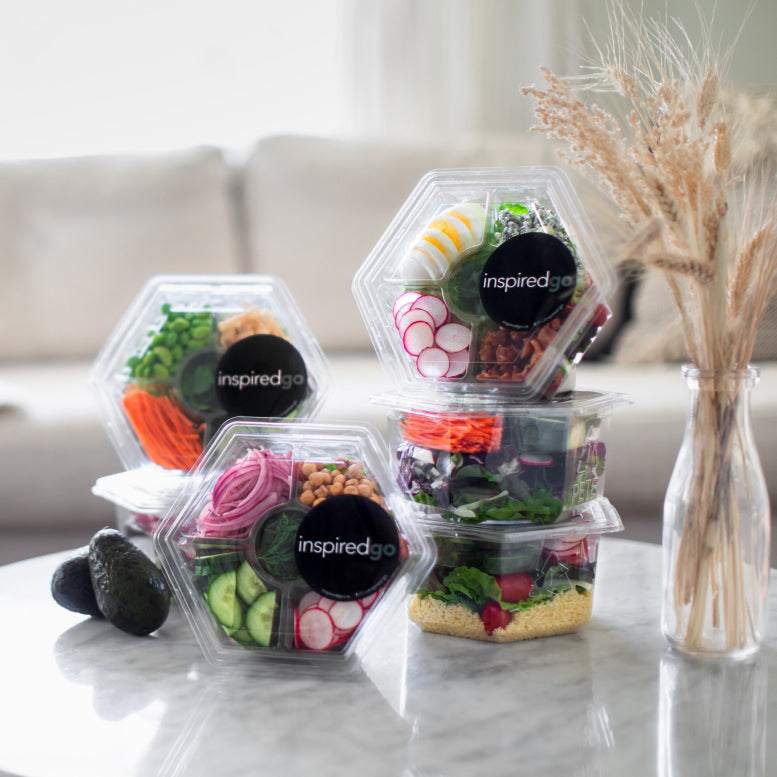What Is The Most Nutritious Salad Green?
Table of Contents
1. Unveiling the Healthiest Salad Green
2. How Many Calories Are in a Salad?
3. How Many Calories in Chicken and Salad?
4. Why Is a Healthy Diet Important?
1. Unveiling the Healthiest Salad Green
When it comes to selecting the most nutritious salad green, many factors come into play. The nutritional value of salad greens can vary significantly depending on their type. Some of the most popular varieties include spinach, kale, romaine lettuce, and arugula, each offering a unique blend of nutrients and health benefits. Spinach, for instance, is packed with iron, calcium, and vitamins A, C, and K. Kale, on the other hand, is a powerhouse of antioxidants and is rich in fiber, calcium, and vitamins C and K. Romaine lettuce provides a good amount of fiber, vitamin A, and folate. Arugula, lesser-known but equally beneficial, is an excellent source of antioxidants, vitamin K, and eye-healthy carotenoids. While all these greens offer numerous health benefits, kale generally tops the list in terms of nutritional value. However, the best way to maximize nutrition is by incorporating a variety of these salad greens into your diet.
Order fresh salads today →


2. How Many Calories Are in a Salad?
The calorie content of a salad varies depending on its ingredients, portion size, and dressing. salads featuring leafy greens, fresh vegetables, and lean proteins are typically low in calories while being nutrient-dense. However, adding ingredients like creamy dressings, croutons, or fried proteins can significantly increase calorie counts. A basic garden salad might contain fewer than 150 calories, while a chicken Caesar salad with dressing can range from 500–800 calories. Salad delivery services often provide detailed nutritional information, helping customers make informed choices about their meals. Pre-portioned salads reduce the risk of overeating and ensure balanced nutrition. With access to transparent calorie counts, customers can confidently enjoy delicious, satisfying salads that align with their dietary goals.
Choose your salads and schedule delivery →
3. How Many Calories in Chicken and Salad?
Chicken salads are a popular meal option, combining lean protein with fresh vegetables for a balanced, satisfying dish. The calorie count in a chicken salad depends on factors like chicken preparation, dressing choice, and additional toppings. Grilled chicken typically adds fewer calories compared to fried or breaded chicken. A standard grilled chicken salad usually contains between 300–500 calories, while creamier dressings and fried chicken can push calorie counts higher. Salad delivery services provide clear nutritional information, allowing customers to make informed choices about their orders. With options to customize salads—such as choosing low-calorie dressings or extra vegetables—customers can easily tailor their meals to fit their dietary goals.
Get fresh salads and snacks delivered →
4. Why Is a Healthy Diet Important?
Inspired Go believes that a healthy diet is the foundation for physical and mental well-being, and their salad delivery service is built on this philosophy. Every salad is designed to provide balanced nutrition with essential vitamins, minerals, fiber, and protein. Inspired Go emphasizes the importance of fresh, locally sourced ingredients to ensure maximum nutrient retention and flavor. By offering pre-portioned, nutrient-dense meals, Inspired Go makes it easier for customers to consistently make healthy choices without the hassle of meal prep or calorie counting. A healthy diet supports better digestion, sustained energy levels, improved focus, and a stronger immune system. With Inspired Go’s convenient and delicious salads, adopting and maintaining a healthy diet becomes both achievable and enjoyable for everyone.
Try our fresh, ready-to-eat salads →
Frequently Asked Questions
The most nutritious salad greens are dark leafy varieties like spinach, kale, and arugula. These greens are packed with essential vitamins, including A, C, and K, as well as minerals like calcium and iron. Kale is particularly rich in antioxidants, while spinach offers significant amounts of folate and magnesium. Choosing a mix of dark greens enhances both the flavor and nutritional value of your salad.
A healthy salad includes a balance of nutrient-dense ingredients like leafy greens, fresh vegetables, lean proteins, and healthy fats. For example, a base of spinach and kale, paired with grilled chicken, cherry tomatoes, avocado, and a light olive oil dressing, creates a wholesome meal. Avoid fried toppings or sugary dressings, as they add empty calories, and opt for natural ingredients to maximize nutrition.
Yes, eating salad daily is a healthy habit when it includes a variety of fresh, nutrient-rich ingredients. Salads offer fiber for digestion, antioxidants for immunity, and essential nutrients like potassium and folate. Regularly eating salads can support weight management and improve energy levels. To avoid monotony, vary your greens, proteins, and toppings to keep meals satisfying and nutritionally balanced.
Healthy salad dressings are typically made with simple, natural ingredients. Olive oil-based dressings, paired with balsamic vinegar or fresh lemon juice, provide healthy fats and enhance flavor without unnecessary calories. Avoid store-bought dressings with high sugar or preservatives. For a creamy alternative, opt for homemade dressings using Greek yogurt or avocado for added nutritional benefits.
Yes, salads are incredibly beneficial for overall health when prepared with fresh, whole ingredients. They are low in calories and high in vitamins, minerals, and antioxidants, supporting heart health, digestion, and immunity. Adding a mix of proteins and healthy fats creates a satisfying, nutrient-dense meal. Regularly incorporating salads into your diet can promote long-term well-being and energy.

